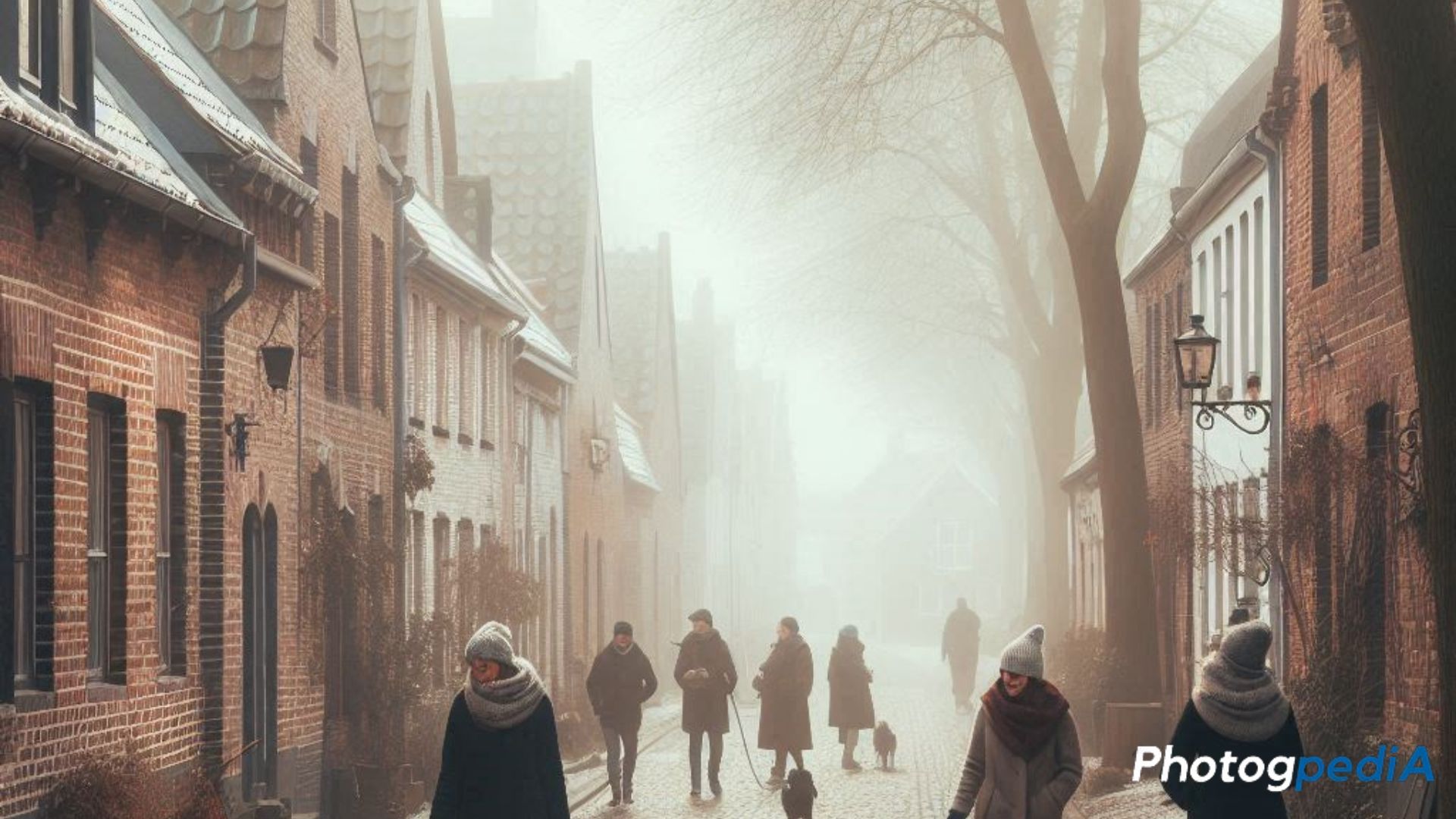Winter can be magical, even without snow! While snow often steals the show, a snowless winter offers a unique and often overlooked opportunity for photographers to capture stunning images. From the stark beauty of bare trees to the cozy warmth of indoor scenes, there’s a world of photographic possibilities waiting to be explored. Winter photography without snow can be just as rewarding as snowy winter photography.
Table of Contents
Understanding the Beauty of a Snowless Winter
The Allure of Bare Trees and Frosty Landscapes
Bare trees have a certain haunting beauty that’s often overlooked. Without the foliage, the intricate branching patterns become visible, creating striking silhouettes against the sky. Without the foliage, the intricate branching patterns become visible, creating striking silhouettes against the sky. Furthermore, pair this with frosty landscapes—fields glittering with morning dew or frost—and you have a scene bursting with delicate textures and tones.
Consequently, a good tip is to look for symmetry and interesting shapes in the trees, and shoot during golden hour for a warm glow that contrasts with the coolness of the scene.
Winter Mornings: Fog and Golden Light
Additionally, foggy mornings are a treasure for photographers. The ethereal atmosphere created by fog softens harsh light and creates a sense of mystery in your photos. Likewise, golden hour, with its warm light, can beautifully complement the cooler tones of winter, even when there’s no snow.
Therefore, try shooting near water bodies or open fields during early morning hours. Add foreground elements like a lonely bench or a winding path for a dramatic effect.
Capturing Subtle Seasonal Changes in Nature
Even without snow, winter transforms the landscape in subtle ways. From the dry crunch of fallen leaves to the muted greens of evergreen trees, there’s plenty to document. Don’t forget to capture the little details, like frost-tipped grass or dried flowers. Meanwhile, close-up shots of these elements can highlight the understated beauty of winter.
Creative Themes for Winter Photography Without Snow
While snow-covered landscapes offer a classic winter aesthetic, there’s a unique beauty to be found in snowless winter scenes. Here are a few creative themes to inspire your photography:
Urban Winter Scenes and Architecture

Cityscapes transform during the winter months. The subdued light and crisp air can create a dramatic and minimalist atmosphere.
- Architectural Details: Focus on the intricate details of buildings, such as ornate facades, stained glass windows, and architectural sculptures.
- Urban Landscapes: Capture the urban landscape, emphasizing the clean lines, geometric patterns, and reflections in puddles.
- Winter Markets and Festivals: Lastly, immerse yourself in the festive atmosphere of winter markets. Photograph colorful stalls, festive decorations, and bustling crowds.
Cozy Indoor Portraits
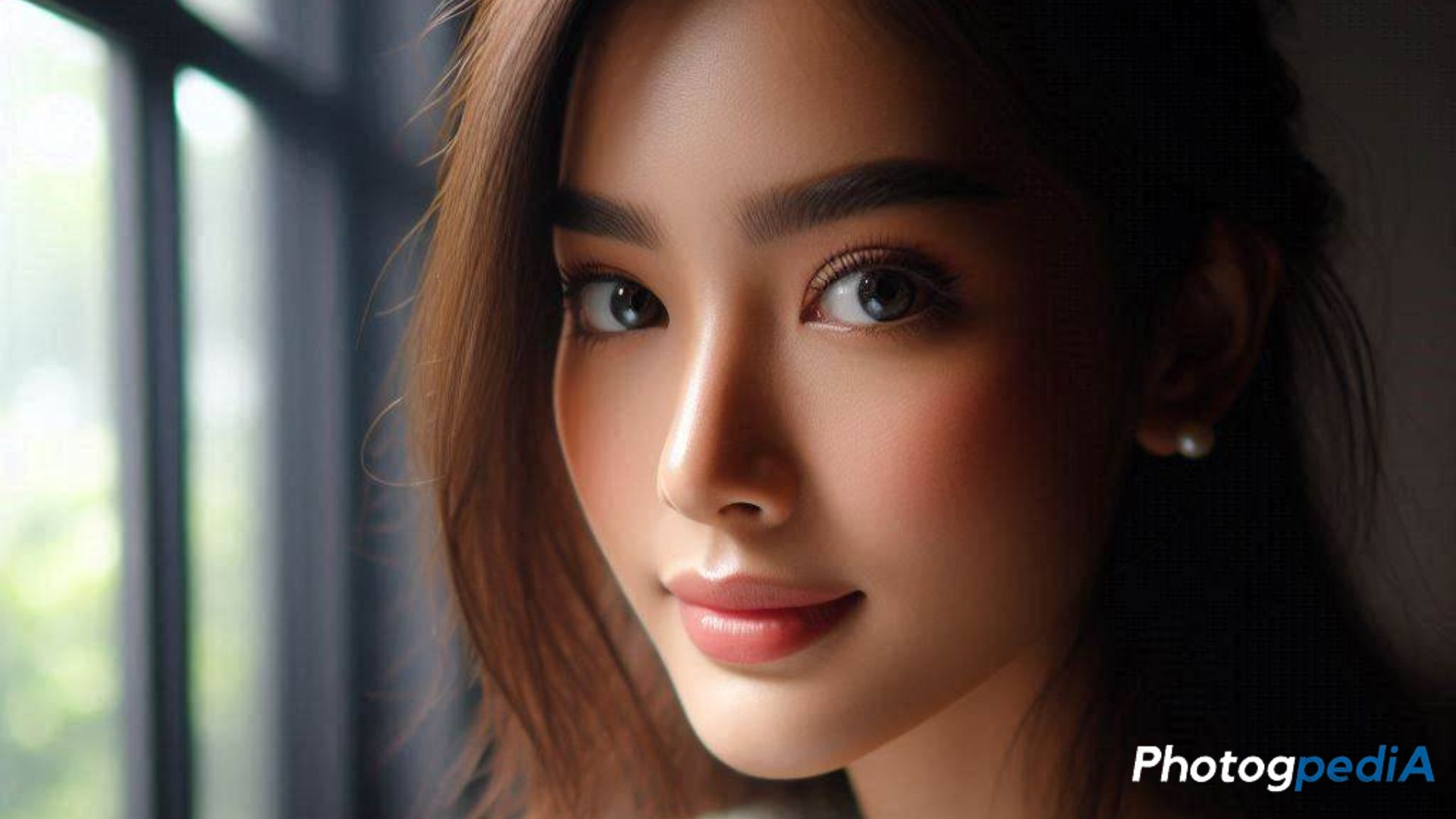
When the weather turns cold, it’s the perfect time to embrace indoor photography. Cozy indoor portraits can evoke feelings of warmth, comfort, and nostalgia. Here are some tips to capture stunning indoor portraits:
Harnessing Natural Light:
- Window Light: Utilize natural window light to create soft, diffused light that particularly illuminates your subject’s face.
- Golden Hour: Take advantage of the golden hour, the time shortly after sunrise or before sunset, for warm, flattering light.
Creating a Cozy Atmosphere:
- Props and Decor: Incorporate cozy props like blankets, pillows, candles, and mugs of hot cocoa to enhance the mood.
- Soft Focus: Experiment with a shallow depth of field to similarly create a dreamy and romantic atmosphere.
- Warm Tones: Use a warm color palette in your post-processing to further emphasize the cozy feeling.
Posing and Composition:
- Intimate Poses: Encourage your subjects to interact with each other or with the props to create intimate and authentic moments.
- Simple Backgrounds: Use a simple background, such as a plain wall or a window, to draw attention to your subject.
- Creative Angles: Occasionally, experiment with different angles and perspectives to create unique and dynamic compositions.
Exploring Texture and Patterns in Winter
Winter offers a unique opportunity to explore the intricate beauty of textures and patterns. By paying close attention to the details, you can particularly capture stunning images that showcase the unique characteristics of the season.
Harnessing the Power of Texture:
- Close-Up Photography: Use a macro lens or zoom in on subjects to reveal hidden textures.
- Side Lighting: Side lighting can likewise accentuate textures by creating dramatic shadows and highlights.
- Experiment with Angles: Similarly, try different angles to discover unique perspectives and emphasize texture.
Capturing Intriguing Patterns:
- Nature’s Patterns: Look for patterns in nature, such as the intricate designs of frost on windows, the symmetrical patterns of snowflakes, or the repeating textures of tree bark.
- Urban Patterns: Explore urban environments for patterns in architecture, street art, and urban landscapes.
- Abstract Patterns: Experiment with abstract compositions, focusing on shapes, lines, and colors.
Tips for Capturing Texture and Patterns:
- Pay Attention to Light: Soft, diffused light can help to enhance texture and detail.
- Use a Tripod: A tripod will help you achieve sharp images, especially when using longer shutter speeds.
- Experiment with Aperture: A shallow depth of field can isolate specific elements and create a blurred background, further emphasizing the texture of your subject.
- Post-Processing: Use photo editing software to enhance the texture and contrast of your images.
Essential Winter Photography Techniques Even Without Snow
Utilizing Natural Light in Snowless Winters
Light is everything in photography, and winter offers a unique quality of light that’s soft and diffused. Avoid harsh midday light; instead, aim for early morning or late afternoon. If it’s overcast, embrace the even lighting to shoot portraits or moody landscapes.
Mastering Contrast and Shadows
Snowless winter scenes often feature subdued colors, making contrast crucial. Look for light and shadow interplay, such as sunlight streaming through trees or creating patterns on walls. Adjusting contrast in post-processing can make your images pop without overdoing the saturation.
Post-Processing for Winter Photography Without Snow
Editing can further bring out the best in your winter shots. Significantly enhance the cool tones with a slight blue tint, or add warmth for a more inviting feel. Tools like Lightroom allow you to play with clarity and dehaze features, making fog and textures stand out.
Must-Have Equipment for Winter Photography without Snow
Best Lenses for Capturing Winter Details
The right lens can significantly enhance your winter photography. Let’s explore a few lens options to capture the beauty of the season:
Wide-Angle Lens:
- Purpose: Ideal for capturing sweeping landscapes, expansive cityscapes, and dramatic vistas.
- Focal Length: Typically 16-35mm or 14-24mm (full-frame equivalent).
- Benefits: Allows you to capture more of the scene and emphasize depth and perspective.
Telephoto Lens:
- Purpose: Perfect for isolating distant subjects, such as wildlife, or capturing details of a scene.
- Focal Length: Typically 70-200mm or longer.
- Benefits: Enables you to compress the perspective and create dramatic compositions.
Macro Lens:
- Purpose: Ideal for capturing close-up details, such as intricate frost patterns, snowflakes, or textures.
- Focal Length: Typically 50mm or 100mm macro.
- Benefits: Allows you to focus on tiny details and reveal hidden beauty.
Prime Lens:
- Purpose: Offers superior image quality, faster aperture, and sharper focus compared to zoom lenses.
- Focal Length: Popular choices include 35mm, 50mm, and 85mm.
- Benefits: Ideal for portraits, street photography, and low-light conditions.
Tripods for Stability in Low Light
Winter days are shorter, meaning you’ll often shoot in low light. A sturdy tripod is invaluable for capturing sharp images, especially if you’re shooting long exposures of urban lights or moody landscapes.
Clothing and Accessories for Outdoor Photography
Staying warm is particularly crucial for outdoor shoots. Invest in touchscreen gloves, waterproof boots, and a durable camera bag. Hand warmers can be a lifesaver during long photography sessions.
Specific Winter Photography Ideas Without Snow
Dramatic Forest Shots
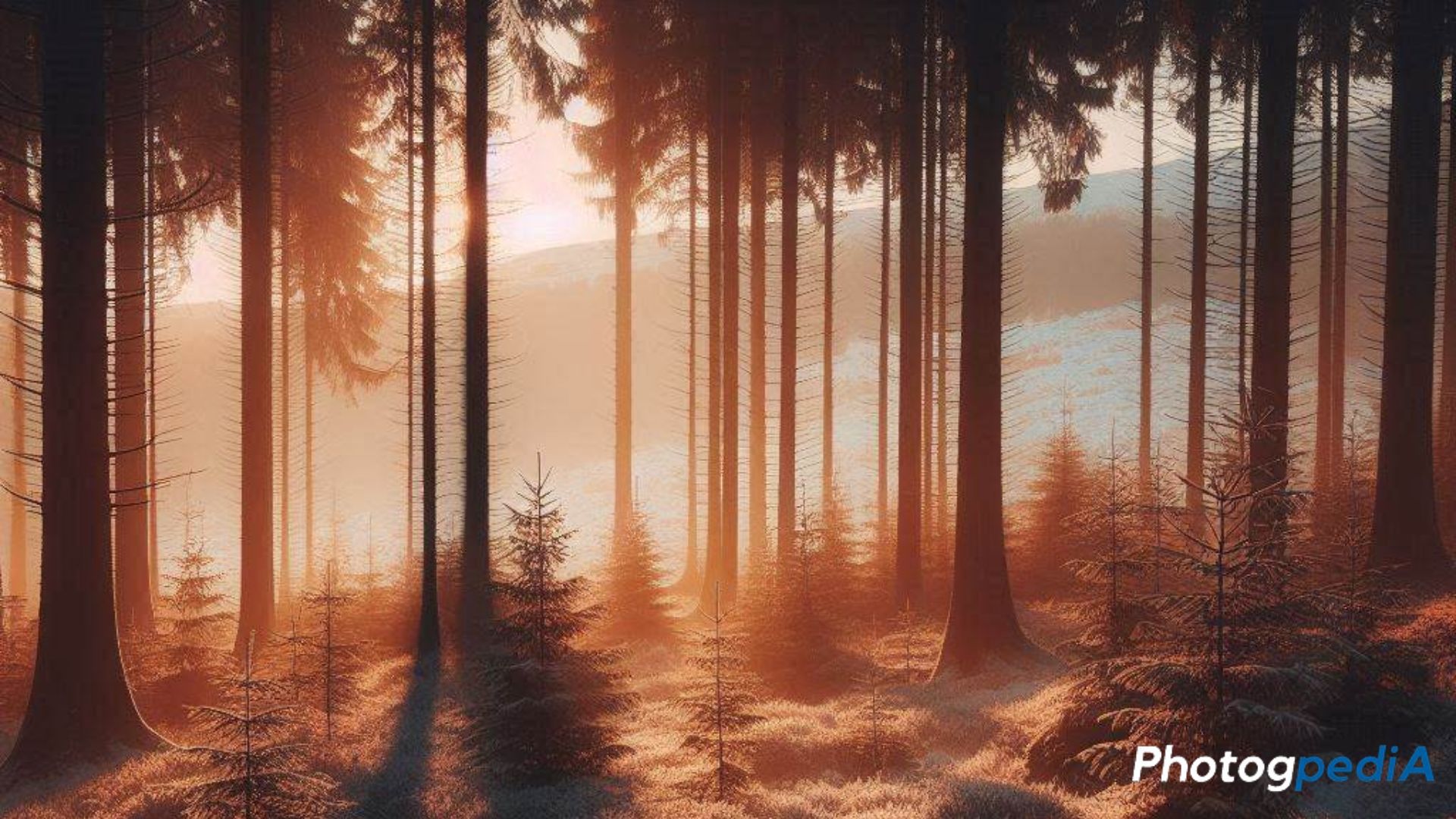
Winter forests offer a unique and dramatic backdrop for photography. The bare trees, the muted colors, and the often-misty atmosphere explicitly create a sense of tranquility and mystery.
Key Tips for Dramatic Forest Photography:
- Leading Lines: Utilize the lines created by tree trunks and branches to guide the viewer’s eye through the image.
- Framing: Use natural frames, such as tree branches or archways, to draw attention to your subject.
- Low-Angle Shots: Experiment with low-angle shots to emphasize the height and grandeur of the trees.
- Foggy Days: Fog can add a layer of mystery and depth to your images.
- Golden Hour: Capture the soft, warm light of sunrise or sunset to create a magical atmosphere.
- Black and White: Consider converting your images to black and white to emphasize texture and contrast.
Compositional Ideas:
- Single Tree: Isolate a single tree against a dramatic sky to create a minimalist composition.
- Paths: Photograph winding forest paths that lead the viewer into the depths of the woods.
- Reflections: Capture the reflections of trees in a still pond or lake.
- Forest Canopies: Look up at the intricate patterns of branches and leaves.
Abstract Ice Patterns on Puddles and Rivers
Even in the absence of snow, winter specifically offers a unique opportunity to capture abstract and mesmerizing ice patterns. These delicate formations, often found on puddles, rivers, and other bodies of water, can create stunning visual compositions.
Tips for Capturing Ice Patterns:
- Get Close: Use a macro lens or zoom in on your camera to capture the intricate details of the ice patterns.
- Low Angle: Get down low to the ground to create a dynamic perspective and emphasize the texture of the ice.
- Side Lighting: Use side lighting to highlight the texture and create dramatic shadows.
- Polarizing Filter: A polarizing filter can help reduce reflections and enhance the colors of the ice.
- Experiment with Composition: Try different compositions, such as leading lines, geometric patterns, or abstract shapes.
Creative Ideas:
- Ice Crystals: Capture the delicate beauty of ice crystals as they form on plants, windows, or other surfaces.
- Frozen Bubbles: Photograph the intricate patterns formed by frozen bubbles on a pond or puddle.
- Ice-Covered Rivers: Explore frozen rivers and streams to capture the abstract patterns created by the flowing water.
- Urban Ice: Look for ice formations on urban structures, such as bridges, fences, and buildings.
Evening Lights and Holiday Decorations
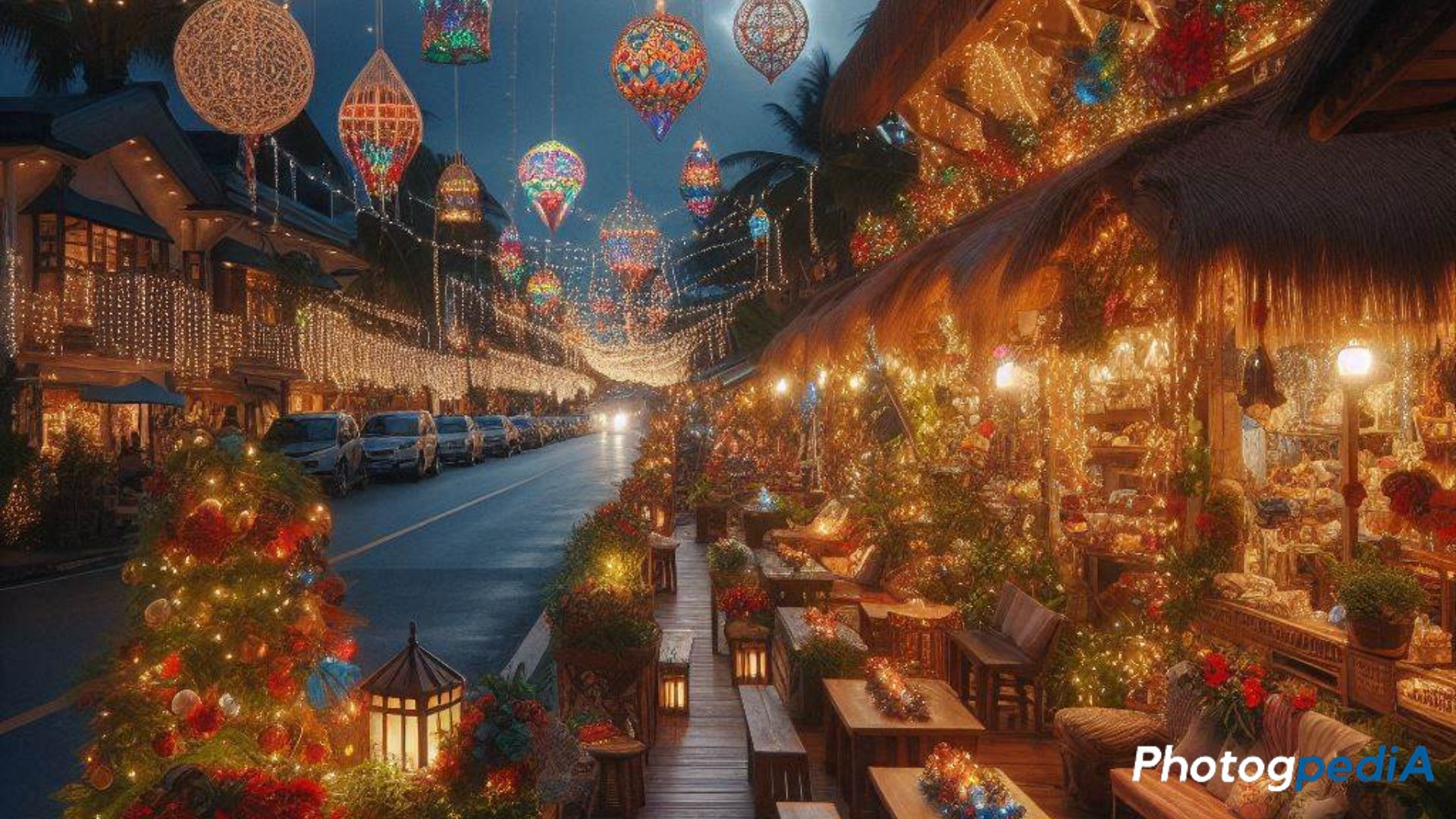
As the winter nights draw in, cities and towns transform into dazzling displays of light. The festive season offers a unique opportunity to capture the magic of holiday decorations and twinkling lights.
Key Tips for Night Photography:
- Tripod: A sturdy tripod is essential for capturing sharp images in low-light conditions.
- Slow Shutter Speed: Meanwhile, use a slow shutter speed to capture the movement of light trails and create a dreamy effect.
- Wide Aperture: A wide aperture (low f-number) will help you capture more light and create a shallow depth of field, isolating your subject from the background.
- Remote Shutter Release: A remote shutter release will help minimize camera shake and allow for longer exposure times.
- White Balance: Experiment with different white balance settings to achieve the desired mood and color temperature.
Creative Ideas:
- Cityscape Lights: Capture the stunning skyline of a city illuminated by holiday lights.
- Christmas Markets: Photograph the vibrant colors, festive decorations, and bustling crowds at Christmas markets.
- Window Displays: Capture the creative and imaginative window displays of shops and department stores.
- Street Photography: Capture candid moments of people enjoying the festive atmosphere.
- Light Trails: Correspondingly, use a long exposure to capture the trails of light created by cars, streetlights, and other moving sources of light.
Wildlife Photography in a Snowless Landscape
While snow-covered landscapes offer stunning backdrops for wildlife photography, snowless winters can also provide unique opportunities to capture animals in their natural habitat.
Key Tips for Winter Wildlife Photography:
- Patience and Patience: Wildlife photography often requires patience. Be especially prepared to spend time waiting for the perfect moment.
- Camouflage and Stealth: Dress in neutral colors and move slowly to explicitly avoid disturbing the animals.
- Telephoto Lens: A telephoto lens will allow you to capture distant subjects without scaring them away.
- High ISO: Be prepared to use a high ISO setting to particularly capture sharp images in low-light conditions.
- Burst Mode: Use burst mode to capture a sequence of images and increase your chances of getting a perfect shot.
Winter Wildlife Subjects:
- Birds: Winter is a great time to photograph birds, especially during migration. Look for waterfowl, raptors, and songbirds.
- Deer: Deer often congregate in open fields and forests during the winter months.
- Squirrels: Squirrels are active year-round and can be photographed in urban and rural settings.
- Other Small Mammals: Keep an eye out for other small mammals, such as rabbits, foxes, and badgers.
Capturing Reflections in Frozen Water
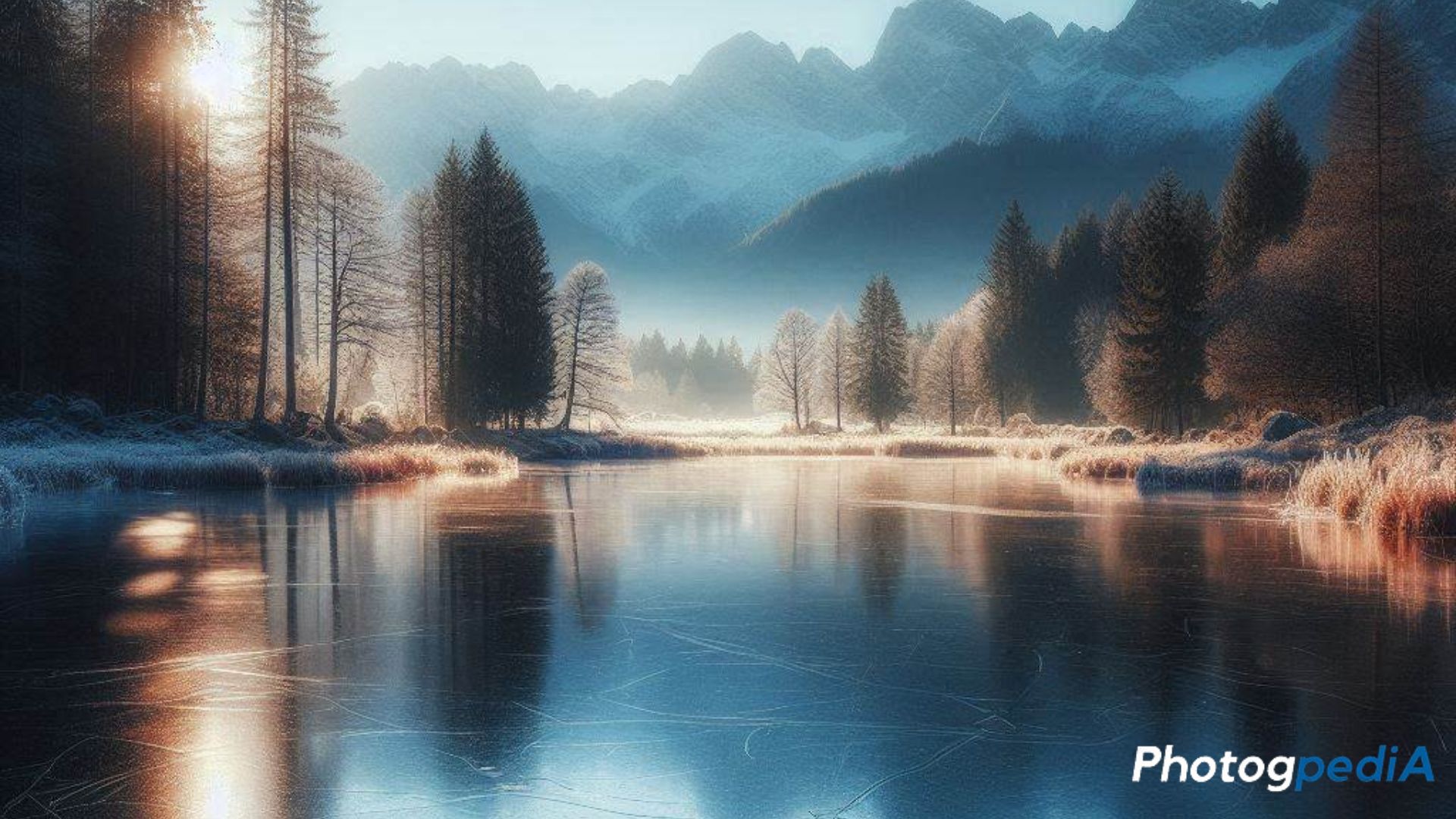
Frozen water bodies can undeniably transform into mesmerizing mirrors, reflecting the surrounding landscape in stunning detail. By capturing these reflections, you can create captivating and abstract images.
Tips for Photographing Frozen Reflections:
- Find the Perfect Spot: Look for bodies of water with clear ice and interesting reflections.
- Low Angle: Get down low to the ground to capture the reflection from a unique perspective.
- Polarizing Filter: A polarizing filter can help reduce reflections on the ice surface, enhancing the clarity of the reflection.
- Composition: Frame your shot to include a strong foreground element, such as a frozen plant or a rock, to add depth and interest.
- Experiment with Exposure: Experiment with different exposure settings to create different moods and effects.
- Post-Processing: Use photo editing software to enhance the colors and contrast of your images.
Creative Ideas:
- Tree Reflections: Capture the reflections of trees and forests in a frozen pond or lake.
- Urban Reflections: Photograph the reflections of city buildings and bridges in frozen waterways.
- Abstract Patterns: Focus on the abstract patterns created by the ice and the reflections.
Conclusion
Winter photography without snow challenges us to look at the season with fresh eyes. From dramatic landscapes to cozy portraits, there’s beauty everywhere—you just need to be creative and explore. So grab your camera, bundle up, and discover the magic of a snowless winter.
About the Author
Hi, I’m Mark – an amateur photographer that first started in 2020. I particularly capture action figures in miniature settings and dioramas. You can follow more of my work at the following social media channels:
- Instagram – iselandmarkventures
- Facebook – iselandmarkventures
- YouTube – The Iselandmarkventures

